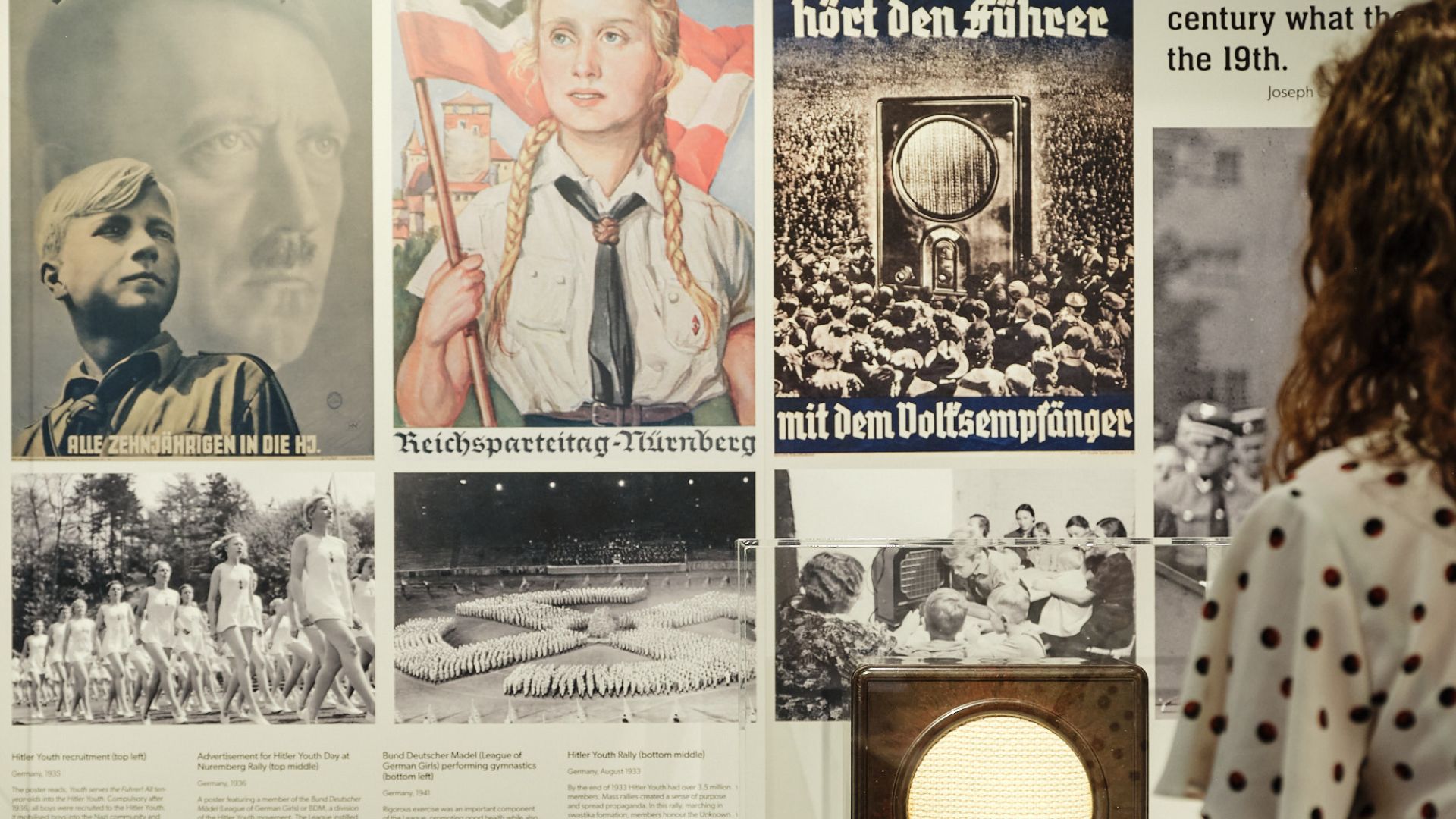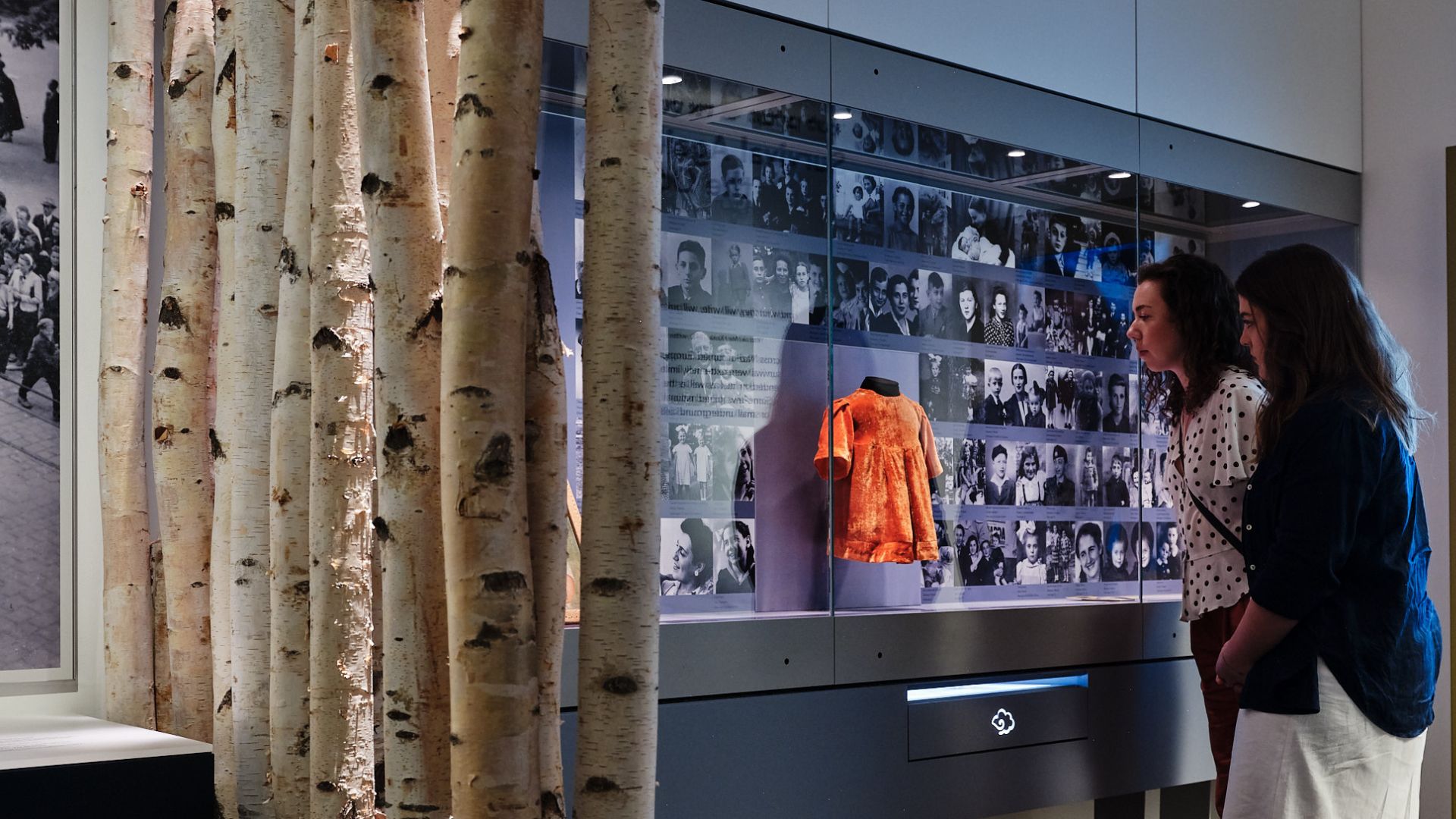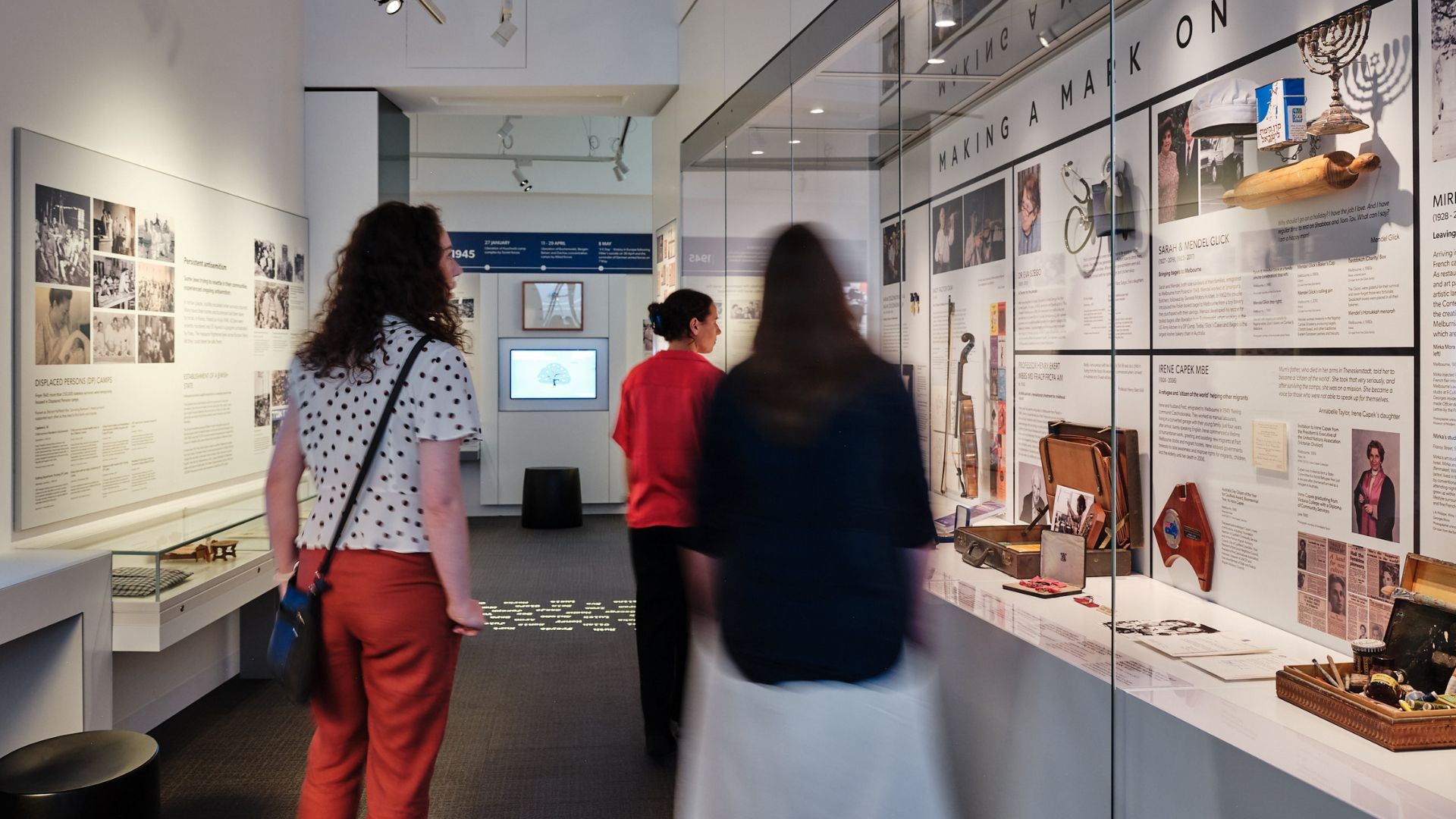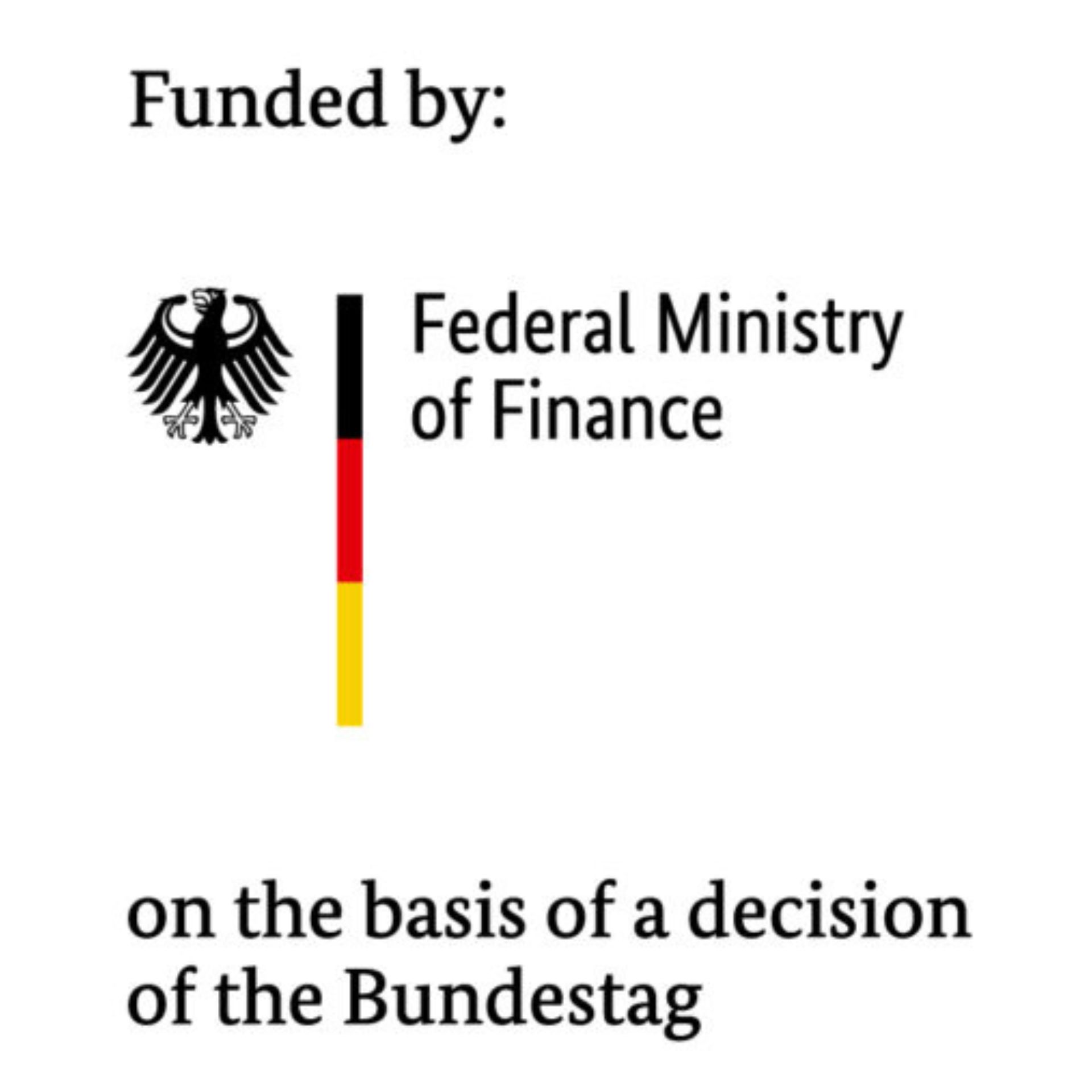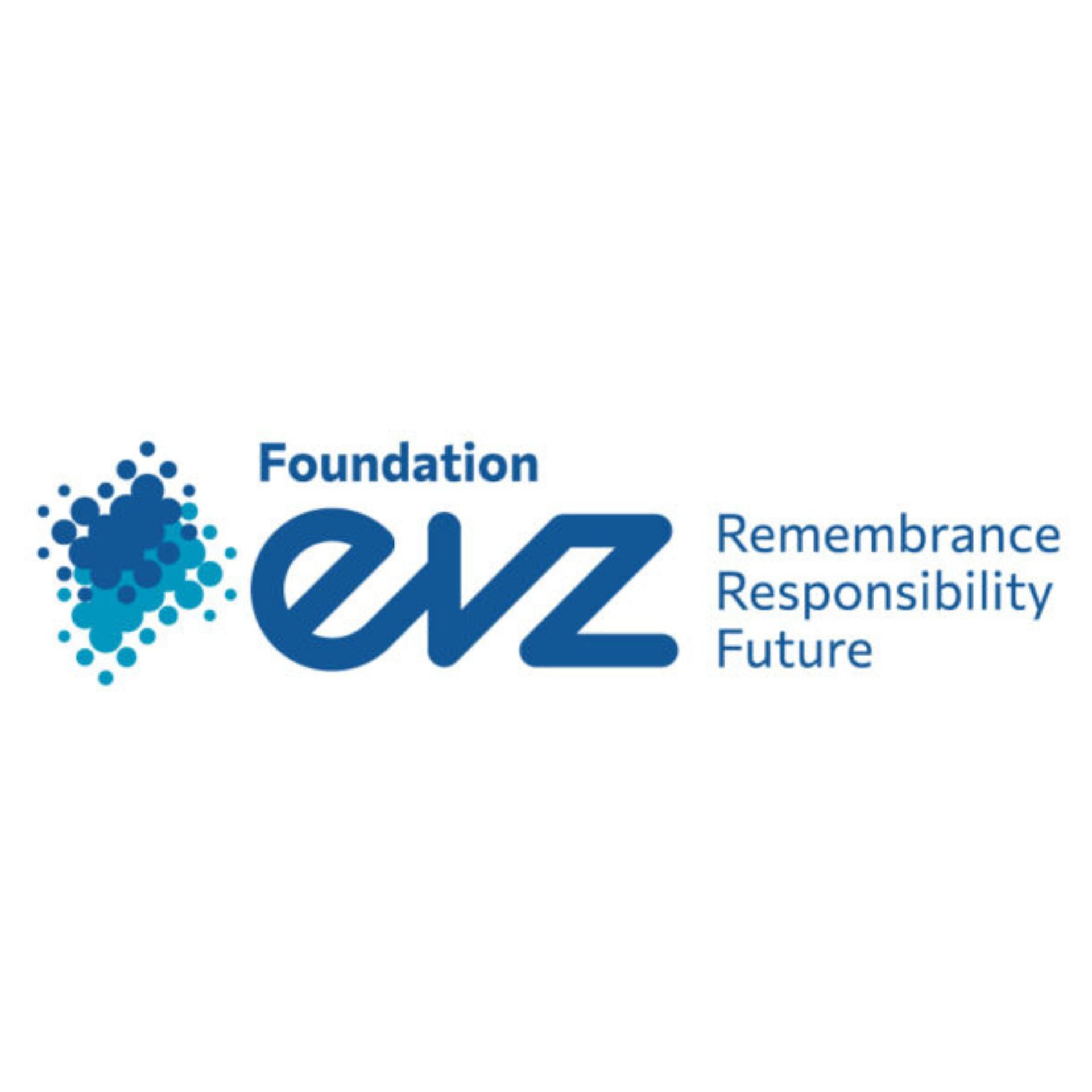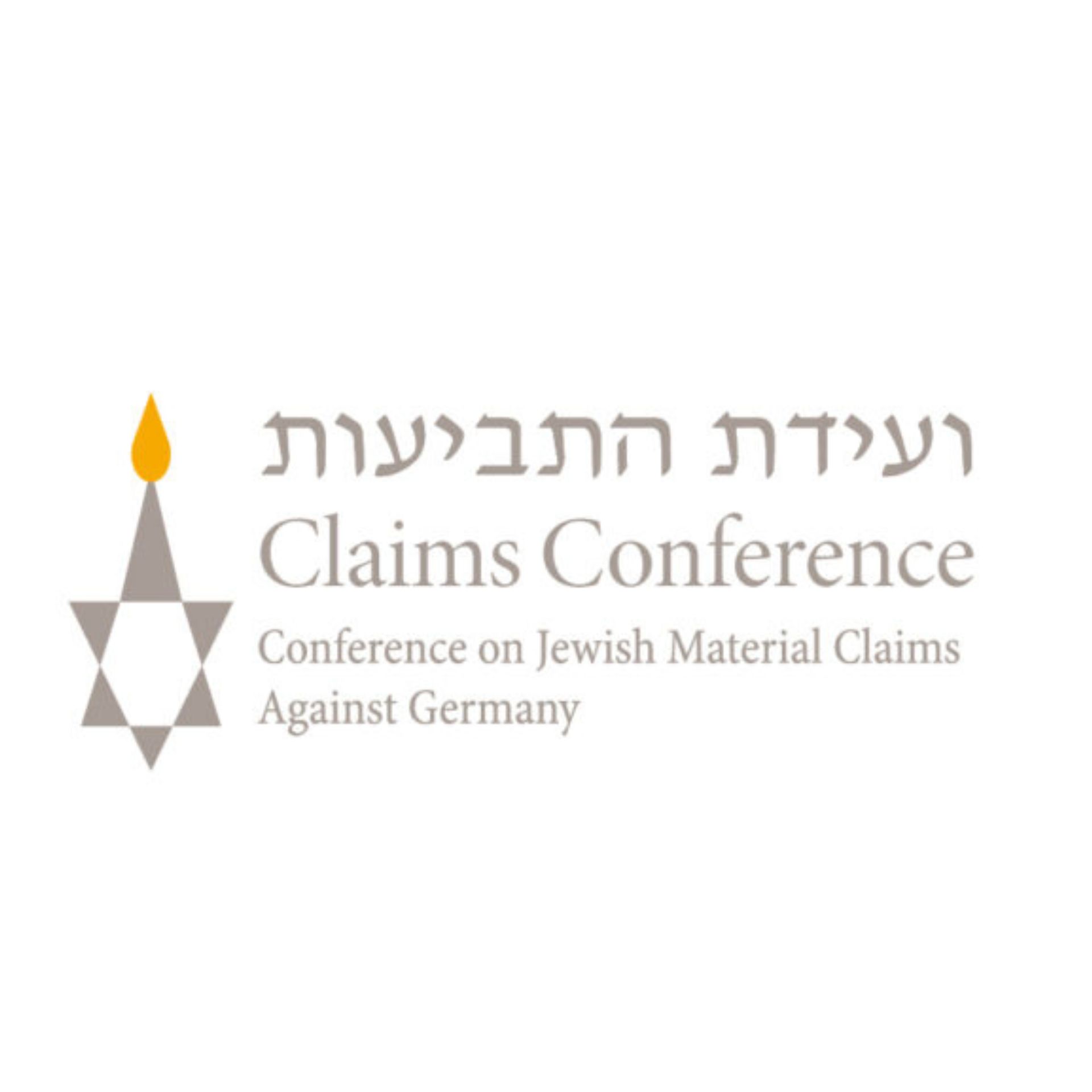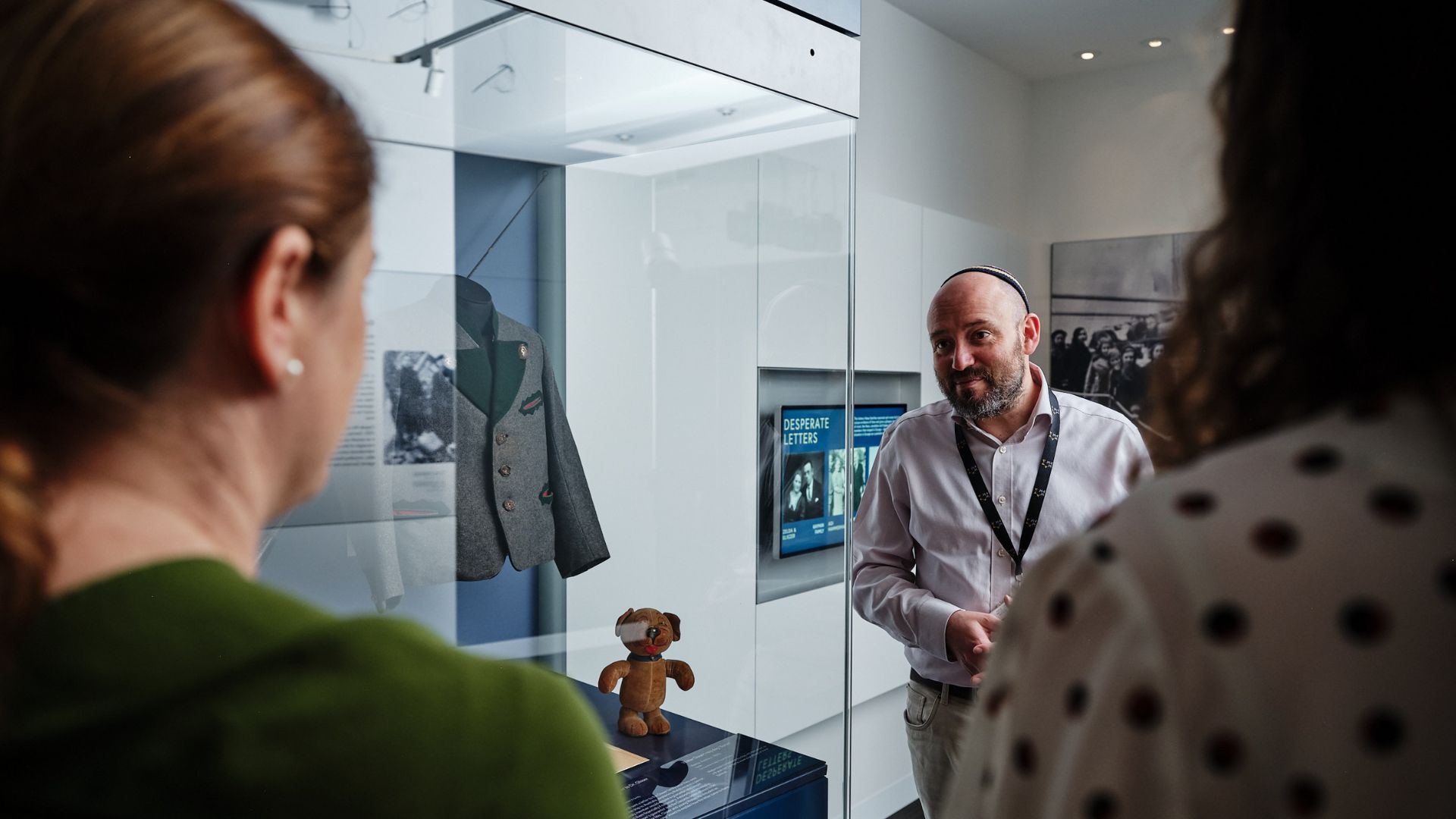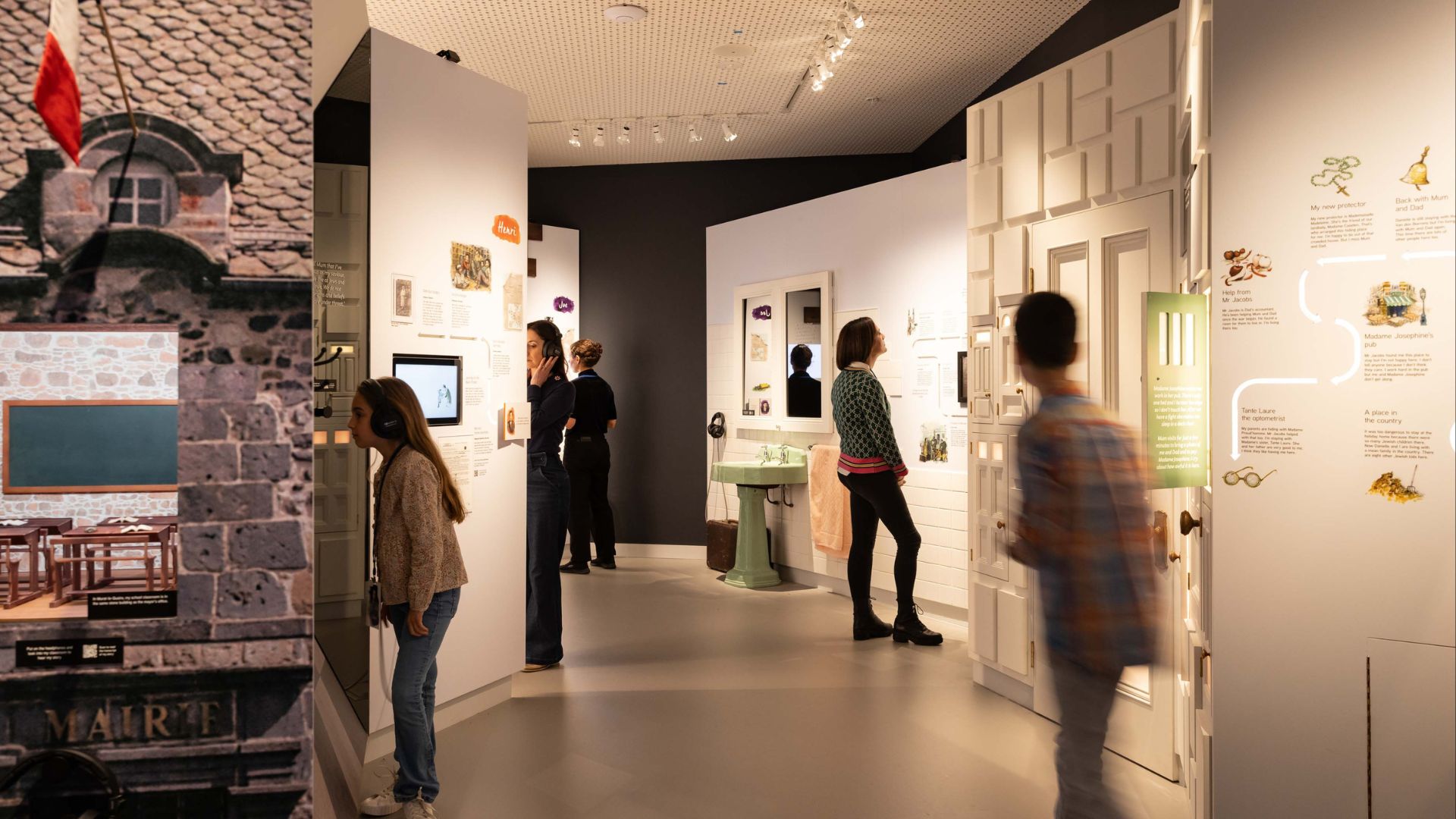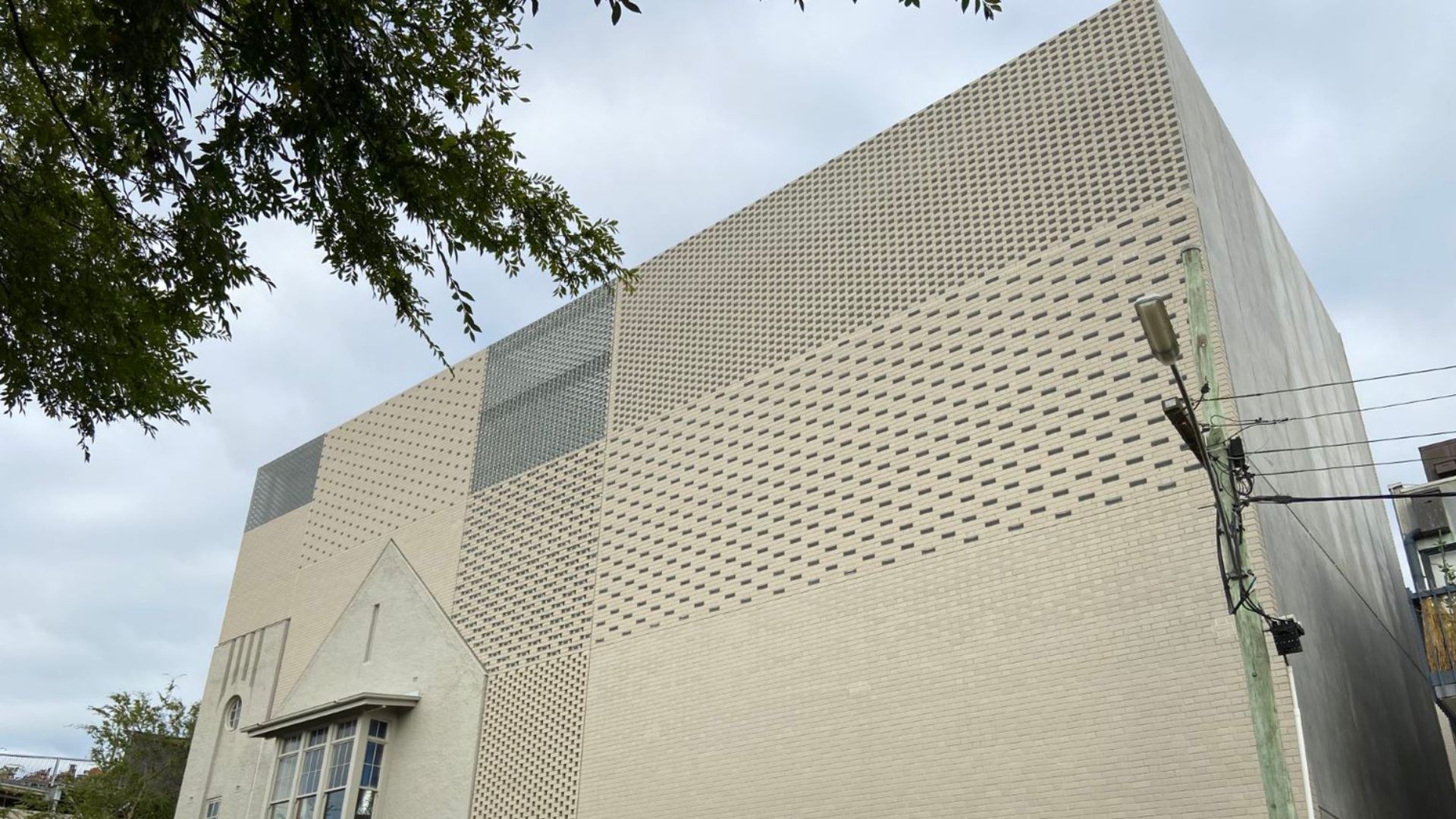Everybody Had a Name takes visitors on a journey from life before the Holocaust, to the rise of Nazism and the outbreak of World War Two through to liberation and its aftermath. Throughout the exhibition the visitor will encounter incredible personal stories from those who survived and migrated to Melbourne, told through unique artefacts and engaging multimedia.
Included as part of our Everybody Had a Name exhibition, visitors can choose to follow, In the Footsteps, of a Holocaust survivor via a multimedia experience which allows you to hear the first-hand accounts of those who experienced the Holocaust as you move through the exhibition.
Visitor Information
Recommended age 15+
Allow up to 90 minutes
Self-guided exhibition. To book an expert guide, click here
